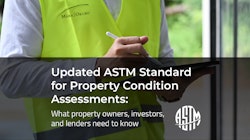

M|O Perspectives
Check back here for our thoughts on the latest developments in our industry.
California Leads the Zero Net Energy Building Revolution
Feb 18, 2020
As building consultancy professionals, we are vested in the future of Zero Net Energy (ZNE). California’s ZNE has a direct impact on the entire industry and involves building owners, operators, and managers, as well as builders.
Historically where California leads, other states tend to follow. But like any new legislation, ZNE can be a confusing topic for our clients. So, let’s take a look at what ZNE is, how it came about, and what its impact will be on the future of building in California and beyond.
What is a Zero Net Energy building?
The simplest definition of a Zero Net Energy building is one that generates or produces as much energy as it uses or consumes over a year. In this case, the energy should be from a clean, renewable source.
Where did the idea of ZNE originate?
The progressive state of California has enacted important policies and legislation to reduce Green House Gas (GHG) emissions. This has led to a clean energy mandate to achieve Zero Net Energy (ZNE) for buildings.
The root of ZNE is in Senate Bill 32, also known as the California Global Warming Solutions Act of 2006. It requires that statewide GHG be reduced to 40% below 1990 levels by 2030. Since buildings account for approximately 55% of total energy usage, they play an important role in the reduction of GHGs. To comply with SB-32, the California Energy Commission (CEC) mandated ZNE requirements for both residential and commercial buildings.
This was done in conjunction with the California Public Utilities Commission (CPUC), establishing an Energy Efficiency Strategic Plan for the State of California in 2008. While this has been in place for more than a decade, many building owners are still unaware of its implications.
How is Zero Net Energy measured in a building?
While Marx|Okubo typically uses “site ZNE,” there are a few important definitions of ZNE based on how energy is measured or calculated:
Site ZNE: Measures the amount of energy at the site utility meter onsite or on the building.
Source ZNE: The amount of energy used at the site must not exceed the amount of energy generated at the site over one year when measured “at the source.” This takes into account all energy sources and the loss of transporting that energy. For example, a building that would otherwise use both electricity and natural gas would have to account for transmission loss and other inefficiencies. When these factors are accounted for, this usually results in having to install fewer renewable energy sources on site.
Time Dependent Valuation (TDV) ZNE: The most complicated calculation, TDV ZNE considers that energy has different values throughout a day and the year. Energy is usually more valuable when supply is low, and demand is high. So, based on the time of day, TDV applies different multipliers to the amount of energy used and generated onsite. This is the preferred methodology for state-owned buildings.
When and where will we start to see ZNE rolled out?
Assembly Bill 758 (2009) requires the CEC to develop and implement a comprehensive plan for existing commercial and residential buildings. It calls for:
- All new residential buildings to be ZNE by 2020
- All new commercial buildings and 50% of existing buildings to be ZNE by 2030
A residential project refers to:
- All single-family dwellings of any number of stories
- All duplex buildings of any numbers of stories
- All multifamily residences with 3 stories or less of habitable stories. (This refers to the number of residential stories. A building can be taller.)
- Additions and alterations to all the buildings above
- Note: Live/work facilities also fall into the residential category.
Commercial projects refer to, but are not necessarily limited to:
- Offices
- Retail & wholesale stores
- Grocery stores
- Restaurants
- Assembly & conference areas
- Industrial work buildings
- Commercial or Industrial storage
- Schools & churches
- Theaters
- Hotels & motels
- Apartments; multifamily buildings; and long-term care facilities with 4 or more habitable floors
California State buildings:
To show that the State of California could achieve ZNE requirements, Governor Brown forced the state to comply 5 years ahead of everyone else. Executive Order B-18-12 requires all new or major renovation state-owned buildings to meet the following requirements:
- 50% of new facilities starting design after 2020 to be ZNE
- 100% of all new State buildings and renovations starting design after 2025 to be ZNE
The State of California has since developed nine ZNE buildings, but only two were verified as ZNE by 2017. Since 2017, the state had identified an additional 22 buildings to be developed as ZNE.
Are there any exemptions for ZNE?
Yes. Qualified historical buildings are currently exempt, along with healthcare, laboratory, and similar essential high-process-energy facilities. However, many organizations that operate exempt facilities are attempting to meet ZNE goals because of the cache they obtain by attaining a high level of sustainability. Additionally, there are indications that certain exempt buildings will have to comply moving forward.
How will building codes change because of ZNE?
To reach ZNE goals, the California Building Code is rapidly being revised with increasing energy efficiency requirements. Builders will be required to comply with all updates.
An International Green Building Code already exists. The California Green Building Code, enacted in 2008, is the first statewide green building code. It gets more stringent with each iteration. These new codes are the tools by which California will ensure that all non-exempted buildings achieve ZNE requirements by their respective due dates.
Following the ZNE initiatives in California, many building professionals nationwide have been lobbying their respective states to develop and adopt a green building code.
Net Zero Energy requirements and their future effect on the built environment around the country is a pressing topic. The landscape is changing fast and as building consultancy professionals, Marx|Okubo wants you to be as informed as possible. Stay tuned as we cover this emerging sustainability topic in future blogs. In the meantime, feel free to contact us at: gerard_lee@marxokubo.com

What we do.
- Owner's Representation
- Property Condition Assessment
- Project Management
- Constructability Reviews
- Repair | Reconstruction
- Facility Condition Assessment
- Construction Loan Monitoring
- Accessibility
- Building Enclosure
- Fire | Life Safety
- Mechanical | Electrical | Plumbing
- ESG | Sustainability & Resiliency
- Structural Engineering
- ASAP® - Automated Structure Alert Program
Marx|Okubo is a national architecture/engineering/construction consulting firm that works with real estate owners, investors and lenders—at every point of the property lifecycle—to evaluate their building projects, solve complex challenges and implement tailored solutions. We help clients understand their projects’ complexities, so they can make more informed decisions and, ultimately, mitigate their risk.




